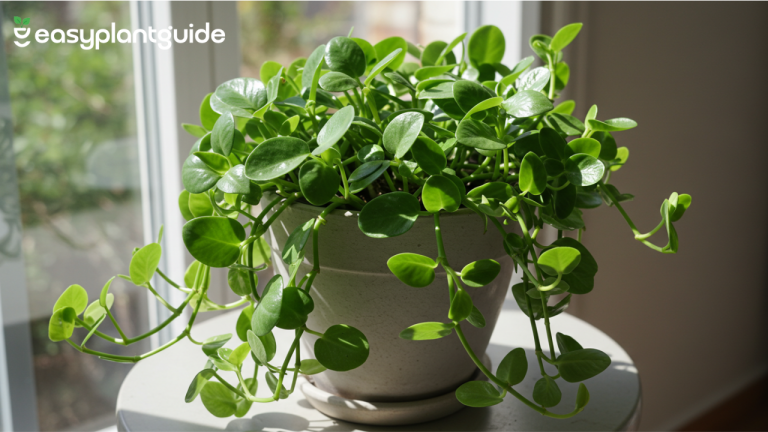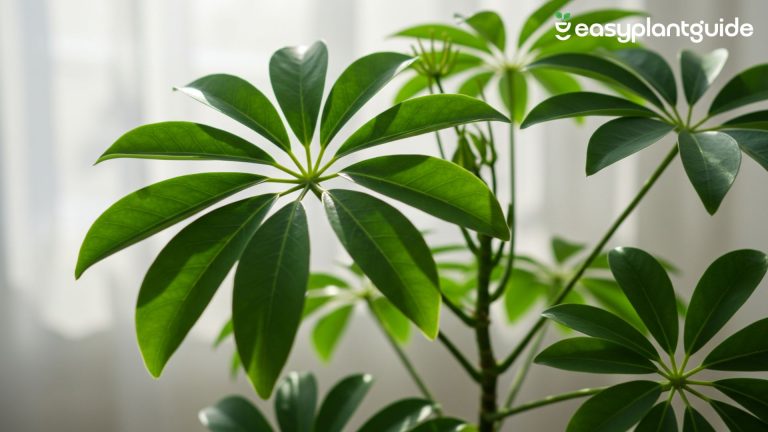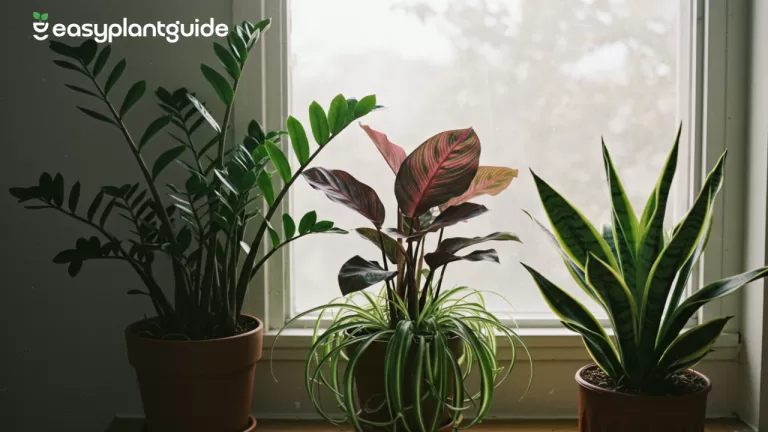Caring for Corn Plants: Impressive Guide 2025
Have you ever admired the tall, elegant leaves of a corn plant and wondered how to keep it thriving? Whether you grow them indoors as a bold décor feature or outdoors as part of your garden, caring for corn plants is easier than you might think. With just a little attention to light, water, and soil, they can stay vibrant, add charm to your home, and reward you with years of natural beauty.
In this guide, we’ll explore everything you need to know about caring for corn plants. From the right watering schedule and pruning techniques to fixing issues like yellowing leaves, this guide has you covered. Think of it less as a lecture and more like a friendly chat with someone who loves corn plants just as much as you do.

What Is a Corn Plant?
The corn plant (Dracaena fragrans) isn’t the same as the corn you eat. Instead, it’s a tropical houseplant admired for its tall, cane-like stalks and broad, green leaves that look remarkably similar to corn. Known for its resilience and beauty, it has become a favorite among homeowners and plant enthusiasts alike. Caring for corn plants is simple because they are low-maintenance, thrive in indoor conditions, and even help purify the air around you. With their stylish, modern appearance and ability to last for years when given the right attention, corn plants are one of the most rewarding houseplants you can grow.
Why You Should Care for Corn Plants
The corn plant (Dracaena fragrans) is not the same as edible corn, but a popular tropical houseplant loved for its beauty and resilience. With tall, cane-like stalks and broad, green leaves that resemble corn, it adds a bold, elegant touch to any indoor or outdoor setting. Native to Africa, this plant has earned a reputation for being one of the easiest houseplants to grow. In fact, caring for corn plants is simple and highly rewarding because they don’t demand much attention while offering plenty of benefits.
People often choose corn plants because they are easy to grow indoors with minimal effort, require less maintenance compared to many other houseplants, and naturally help purify the air while improving indoor air quality. Their stylish, modern appearance makes them a perfect addition to any décor, and with proper care, they can remain long-lasting and resilient companions in your space.
Ideal Growing Conditions for Corn Plants
Think of corn plants as your low-drama plant buddies. They don’t demand much, but like all plants, they have certain preferences that keep them healthy and thriving. By understanding the right conditions, caring for corn plants becomes even easier.
1. Light Requirements
Corn plants prefer bright, indirect sunlight, which helps them grow lush and vibrant. While they can tolerate low-light conditions, too much direct sun can scorch their leaves. Place them near a filtered window for the best results.
2. Temperature Needs
Keeping your corn plant in the right temperature range is key. They thrive in environments between 60–75°F (15–24°C). If the temperature drops too low, their growth slows, and the leaves may start showing signs of stress.
3. Humidity Levels
Moderate humidity is ideal for corn plants, but they are adaptable and can handle average household air. In very dry climates, occasional misting or placing the plant near a humidifier will help maintain leaf health.
4. Soil Preferences
A well-draining potting mix is essential for caring for corn plants because it prevents waterlogging and root rot. Choose a light, airy soil blend that retains some moisture but doesn’t stay soggy.
How to Water a Corn Plant Correctly
Overwatering is the number one cause of problems when caring for corn plants. These tropical beauties don’t like sitting in soggy soil, and too much water can quickly lead to root rot. Getting the watering routine right is one of the most important steps in keeping your plant healthy.
1. Check the Soil First
Always test the soil before you water. The top 1–2 inches should feel dry to the touch—if it’s still moist, wait another day or two. This simple habit prevents the common mistake of watering too often.
2. Use the Right Water
Corn plants are sensitive to chemicals found in tap water, especially fluoride and chlorine. Using room-temperature, filtered, or distilled water is a safer choice. If tap water is your only option, let it sit overnight so some chemicals can evaporate.
3. Avoid Standing Water
Never let your corn plant sit in a saucer full of water. Good drainage is essential when caring for corn plants, so always empty any excess water from the pot tray to protect the roots.
4. Adjust for the Seasons
In the growing months of spring and summer, your corn plant may need watering once a week. During winter, however, growth slows down and the soil stays wet longer, so reduce watering to every 10–14 days.
5. Maintain Humidity
While corn plants don’t need constant misting, they do appreciate a little extra moisture in dry conditions. Lightly mist the leaves occasionally, or place a water-filled pebble tray beneath the pot to boost humidity naturally.
Fertilizing Tips for Strong Growth
Fertilizing is like giving your corn plant a multivitamin, and it’s an important step when caring for corn plants.
- Use a balanced, water-soluble fertilizer.
- Apply once a month in spring and summer.
- Skip fertilizing in winter.
- Avoid over-fertilizing—it can burn the roots.
- Flush the soil occasionally to remove salt build-up.
Pruning and Trimming Corn Plants
When caring for corn plants, pruning helps them stay neat, healthy, and looking their best.
- Trim yellow or brown leaves.
- Cut back tall stalks to encourage bushier growth.
- Use clean, sharp scissors or pruning shears.
- Don’t be afraid—corn plants bounce back quickly.
- Repurpose cuttings for propagation.
Propagation: Growing More Corn Plants
Caring for corn plants also includes learning how to propagate them, giving you more greenery without extra cost.
- Cut a healthy stem below the leaf joint.
- Place it in water until roots appear.
- Transfer to soil when roots are a few inches long.
- Keep in indirect sunlight during rooting.
- Be patient—new plants take time to grow.
Common Problems and Solutions
| Problem | Cause | Solution |
|---|---|---|
| Yellow leaves | Overwatering | Reduce watering, check drainage |
| Brown tips | Low humidity or too much fertilizer | Mist leaves, flush soil |
| Drooping stalks | Underwatering | Water thoroughly |
| Leaf spots | Pests or fungal infections | Treat with neem oil or fungicide |
| Slow growth | Low light | Move to brighter indirect light |
Decorating With Corn Plants

Caring for corn plants isn’t just about keeping them alive—it’s also about using their beauty to enhance your space. With their tall canes and lush, arching leaves, corn plants make a stunning statement in any room. Place one in a sleek pot near a window for a modern, minimalist vibe, or use a pair of them to frame an entryway and create a welcoming atmosphere.
Outdoors, corn plants can be arranged on patios, balconies, or shaded garden corners to add a tropical touch. You can even group them with other leafy plants for a layered, jungle-like effect. Whether indoors or outdoors, decorating with corn plants allows you to enjoy their natural charm while elevating your home décor.
Pests That Affect Corn Plants
When caring for corn plants, you may occasionally face pests that affect their health. Spider mites leave fine webbing on the leaves, mealybugs show up as small cottony spots, and scale insects appear as brown bumps. Aphids often cluster in green or black groups on the stems, while fungus gnats hover around damp soil. Regularly checking your plant makes it easier to catch these problems before they spread.
The good news is most pests are easy to control with simple care. Wiping leaves with soapy water helps remove bugs, while neem oil spray works well for stronger infestations. Avoiding overwatering, cleaning the leaves, and ensuring good airflow all reduce the risk of pests. With consistent attention, caring for corn plants becomes stress-free, and your plant stays healthy and vibrant.
Corn Plant Seasonal Care
Caring for corn plants means adjusting your routine as the seasons change, since their needs vary throughout the year. In spring, growth picks up, so it’s the perfect time to water more regularly, introduce fertilizer, and encourage fresh, healthy leaves. By summer, the plant thrives in bright, indirect light, but it also needs extra humidity. Misting the leaves more often and keeping an eye out for pests will help your corn plant stay strong during the warmer months.
As fall arrives, caring for corn plants shifts toward slowing down their feeding. Reduce fertilizing and pay attention to the changing light, as shorter days may affect growth. Winter is the plant’s resting phase, so water sparingly and protect it from cold drafts or sudden temperature changes. No matter the season, one rule always applies—keep the leaves clean to support photosynthesis and allow your corn plant to stay vibrant all year long.
Indoor vs Outdoor Corn Plants
When it comes to caring for corn plants, you have the flexibility of growing them both indoors and outdoors, but their needs vary slightly depending on the setting. Indoors, corn plants thrive as statement pieces with their tall stalks and lush leaves. They prefer bright, indirect light and steady room temperatures, making them a great fit for living rooms, offices, or hallways. With regular watering and occasional misting, indoor corn plants can grow beautifully without demanding much attention.
Outdoors, corn plants enjoy more natural sunlight but should still be protected from harsh, direct rays that can scorch their leaves. They grow well in shaded patios, balconies, or gardens with mild climates. When caring for corn plants outside, pay extra attention to watering during hot months and protect them from frost in winter. Whether indoors or outdoors, these versatile plants adapt easily, rewarding you with year-round greenery.
Conclusion
Caring for corn plants doesn’t have to feel overwhelming or complicated. They’re like the easygoing roommates of the plant world—happy with the basics and forgiving if you miss a watering now and then. By following simple routines such as proper watering, seasonal fertilizing, pruning, and pest control, you can enjoy a healthy, vibrant plant that not only freshens your home but also adds a touch of elegance to any space.
So why not bring one into your home and see the difference it makes? With consistent attention, corn plants reward you with tall, graceful stalks, lush green leaves, and even improved air quality. Once you get the hang of caring for corn plants, you’ll discover just how effortless and enjoyable it can be to keep them thriving for years, making them one of the most rewarding houseplants you’ll ever own.
Explore more plant blogs and grow your green journey with us.







